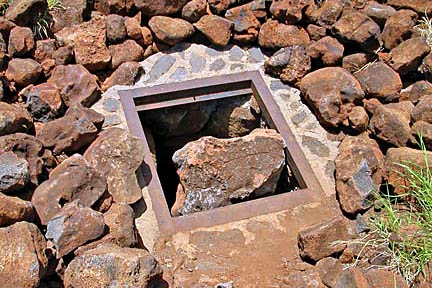
|
Gathering Place
|
Cave artifacts wrongly
deemed ‘sacred’
Regarding the Dec. 5 Star-Bulletin story "Kawananakoa supports preservation of artifacts": In the common view, it seems that all Hawaiian caves are assumed to be "burial" caves, and any objects found in caves were put there as "funerary objects." This idea, perhaps inspired by the findings of ancient Egyptian royalty lying amidst the splendor of their finest possessions, has gripped the public imagination, but is wrongly applied to cave burials of the bones of Hawaiian chiefs. Their bones were interred without anything that might identify them to a thief, who could do great injury to the spirit of the deceased by carving the bones into fishhooks or inserting the teeth into an enemy chief's spittoon. Before modern locked storage, caves were simply the safest places for storage of precious goods.
Artifacts discovered in caves have been falsely identified as "funerary" by Hawaiians seeking repatriation of those objects in testimony before the review board of the Native American Graves Protection and Repatriation Act (NAGPRA) -- testimony the board has accepted without questioning. The fact is, Hawaiians did not inter the dead with their precious objects.
So said William Brigham, friend of King Kalakaua and an early director of the Bernice Pauahi Bishop Museum. About the objects found in Forbes Cave, he wrote; "At the time of the destruction of the idols, after the kapu was broken, many carved figures ... were doubtless hidden by the devout priests from the mob violence that generally accompanies such changes; witness the terrible destruction ... in 'civilized' countries during the reformation. But more important was the custom of depositing in some cache the especial property of a departed chief. Not by any means with his remains to which they might serve for identification, a thing to be most carefully avoided." (Page 10, Bishop Museum Memoirs, Vol.II, No.2, 1906)

Kanupa Cave in Kohala on the Big Island, where Hui Malama reburied Hawaiian bones and artifacts, showed signs of disturbance during an Aug. 21 visit by the Star-Bulletin.
In their effort to qualify a carved wooden figure for repatriation from a Providence, R.I., museum, Hui Malama and Office of Hawaiian Affairs representatives claimed it was a rack for spears on a chief's war canoe (it's actually a fishing pole rack for a fishing canoe). They also claimed it as a funerary object taken from a "burial cave"; and that it is a "sacred" object needed for religious purpose today (never mind that the Hawaiian religion was tossed out by Kamehameha II on advice from Ka'ahumanu and high priest Hewahewa before missionaries arrived). Such invented nonsense moved the Review Board to recommend repatriation.
[News] [Business] [Features] [Sports] [Editorial] [Do It Electric!]
[Classified Ads] [Search] [Subscribe] [Info] [Letter to Editor]
[Feedback]
